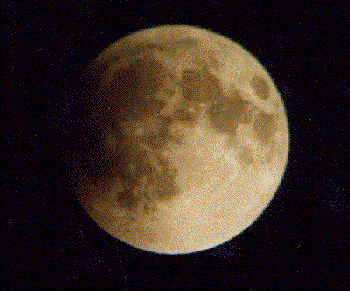- it is the second brightest object in the sky, only the sun is brighter
- found about 384 000 km from earth
- diameter of 3 476 km
- can be explored by you and me quite easily because we can see it with just our eyes
- covered with mountains, valleys and craters
- the areas that are dark in colour are called “mares” and these are areas that were hit by giant asteroids, - lava bubbled out - a sea of lava and then hardened
- the lighter areas are the mountains or “highlands”
- craters are holes that are made by meteors, asteroids - these holes remain empty whereas the craters on earth get filled with water and form beautiful lakes
- has a rocky crust that is about 800 km thick, below that might be a area of molton rock or it might have cooled down (scientists are not really sure), and finally the core (perhaps iron)
- has no atmosphere so the footprints of the ‘first man on the moon’ will always be there – no atmosphere means no erosion or wearing away of the land, it also means,
- temperatures will be extreme – night: -180° C , days: 110° C
- revolves and rotates just like the earth
- rotates (spins) on its axis once every 29.5 days which means one day for the moon is 29.5 earth days
- revolves (orbits) the earth once every 29.5 days as well (about once a month)
The moon always stays the same shape and never really disappears. All that happens is that we see a different fraction or piece of the moon. Remember that we see reflected light when we look at the moon. We see the section of the moon that is being lit up by the sun and we don't see all of the lit area.
When you look at the moon what you see will depend on the moon's location with the sun and you on earth. In other words, the way the moon looks to you is because of its position in its orbit around earth. Let's take a closer look.






